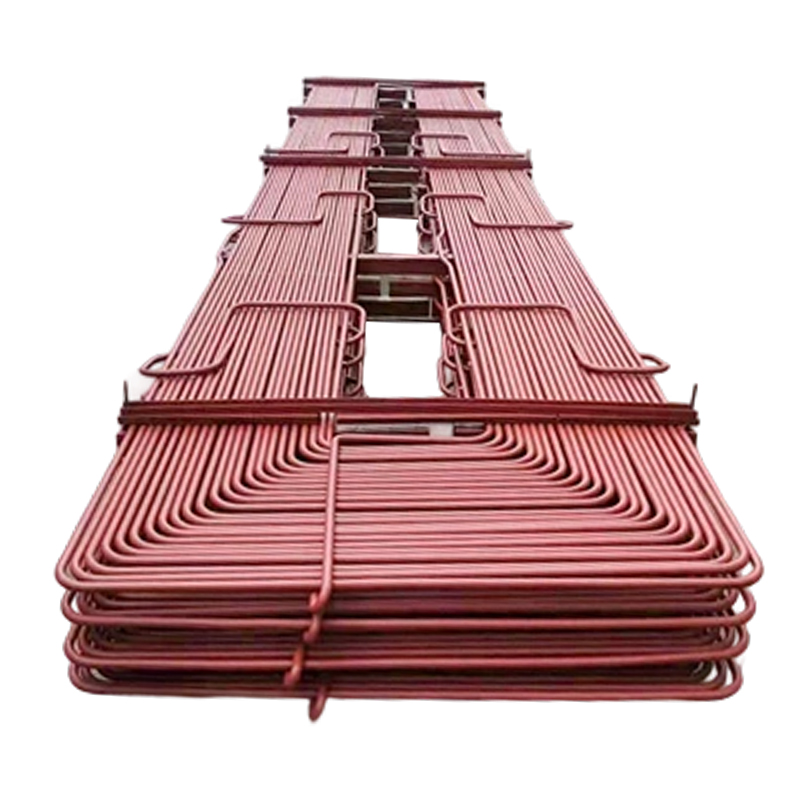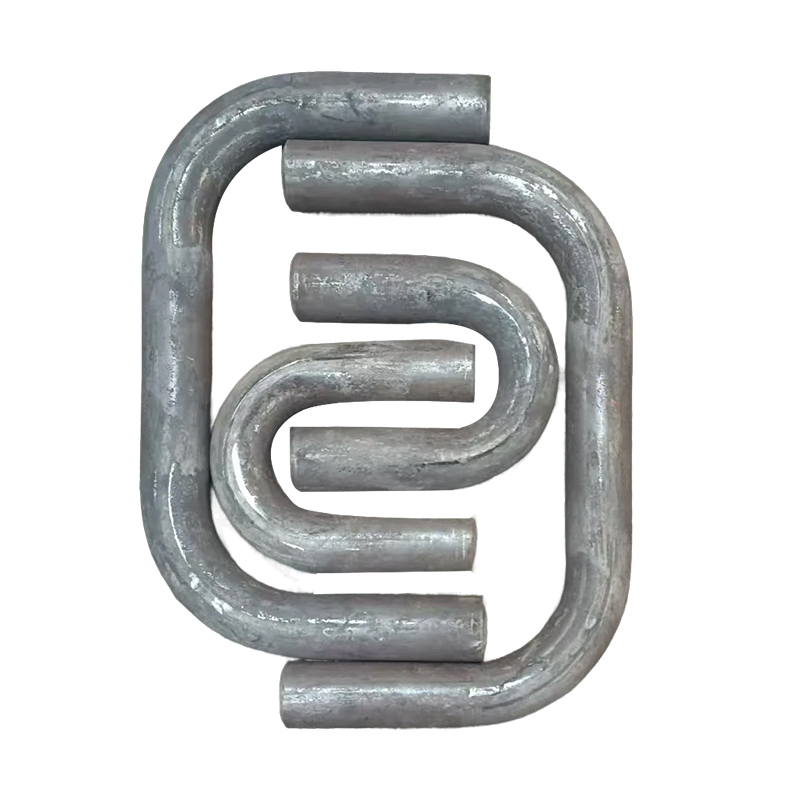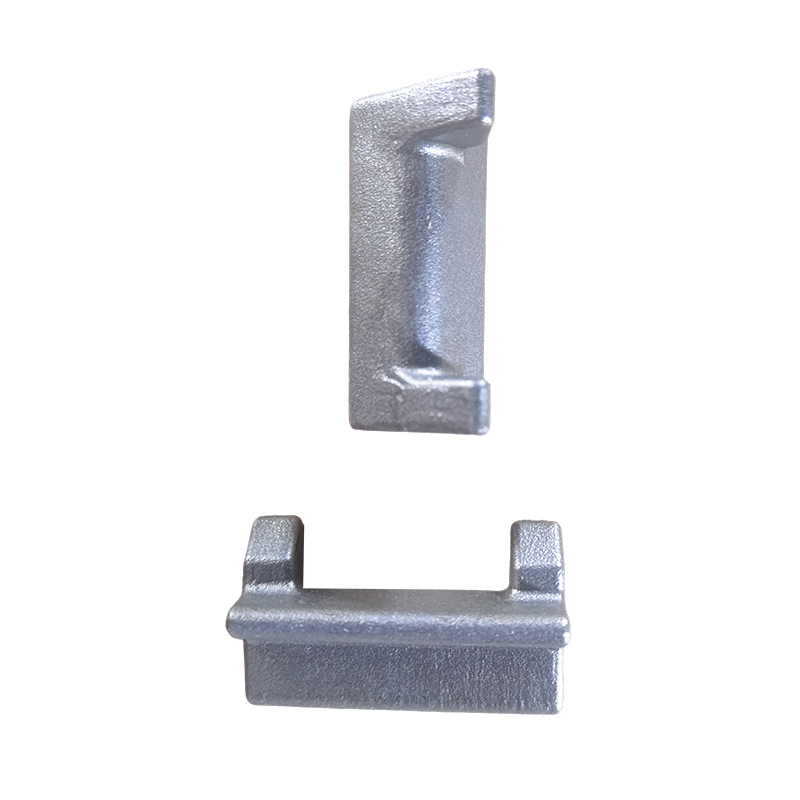How can boiler evaporator module products achieve more efficient thermal energy management?
Release Time : 2025-04-05
To achieve more efficient thermal energy management, boiler evaporator module products need to take comprehensive measures from multiple dimensions such as system design, operation control, and maintenance.
Optimize system design
Reasonable planning of structural layout: The internal structure of boiler evaporator module products directly affects the heat exchange efficiency. Optimizing the arrangement of pipelines, such as using multi-pipe or plate structures, can increase the heat exchange surface area, make the contact between steam and evaporated liquid more complete, and reduce heat loss. For example, upper and lower headers are set at both ends of the module to form a complete heating surface, so that high-temperature gas can heat the water in the module more efficiently when it flows through, and convert it into high-pressure steam.
Accurately match material performance: Select appropriate materials according to working temperature, pressure and medium characteristics. For high temperature and high pressure environments, high temperature resistant and corrosion resistant materials, such as special alloy steel, can not only ensure the stable operation of the equipment under harsh working conditions, but also reduce the heat loss caused by material problems.
Efficient use of waste heat resources: Design a waste heat recovery system to recycle the heat in the flue gas waste heat discharged by the boiler. For example, set up a waste heat boiler and use waste heat to heat water or generate steam. These hot water or steam can be used for production and heating, thereby indirectly saving fuel and improving overall thermal efficiency.
Strengthen operation control
Accurately control operating parameters: The operating efficiency of the evaporator is closely related to operating parameters such as feed amount, temperature, and pressure. Through the automatic control system, these parameters are monitored and adjusted in real time to ensure that the evaporation process is always in the best operating state. For example, the feed amount, steam pressure and temperature are automatically adjusted according to real-time data to avoid heat waste or incomplete evaporation.
Optimize steam pressure and temperature control: In the double-effect evaporator, ensure the steam pressure difference between the first effect and the second effect, so that the steam temperature of the first effect is suitable for the evaporation process, and at the same time, the second effect can make full use of low-temperature steam to reduce steam waste. By accurately controlling the feed temperature, ensure the optimal evaporation temperature of the raw material and improve thermal efficiency.
Reasonably control the temperature difference of the heating surface: The temperature difference between the heating surface and the evaporating liquid is an important factor affecting thermal efficiency. Excessive temperature difference will lead to increased heat loss and affect the energy recovery effect. By controlling the feed flow and steam flow, the temperature difference between the heating surface and the evaporating liquid is kept as small as possible, thereby improving the thermal efficiency.
Improve heat exchange efficiency
Strengthen the cleaning of the heat exchanger: After the heat exchanger of the evaporator has been running for a long time, a large amount of scale will be generated inside, resulting in a decrease in heat exchange efficiency. Clean the heat exchanger regularly to ensure its heat exchange efficiency. Special cleaning agents can be used to effectively soften and remove the dirt generated by the evaporator during the treatment of high-salt wastewater, and there is basically no corrosion loss to the evaporation equipment.
Improve the fluid flow pattern: Ensure that the liquid and steam flow evenly in the evaporator to avoid local overheating or cooling. Optimize the liquid flow path to avoid dead corners and liquid retention, so that the evaporation surface is evenly heated, thereby improving the heat exchange effect.
Improve the condensation system
Improve the condensation efficiency: Optimize the design of the condenser, increase the condensation surface area, and ensure that the steam can be quickly cooled and converted into liquid. For example, use efficient condensing tubes and reasonable tube bundle arrangement to improve the condensation effect.
Control the condensation water temperature: Maintain a low condensation temperature to ensure that the steam can be completely condensed and reduce energy loss. The condensate temperature can be controlled by adjusting the flow and temperature of the cooling water.
Focus on maintenance
Regular inspection and maintenance: Establish a regular boiler inspection system, focusing on key components of the evaporator module, such as safety valves, pressure gauges, temperature sensors, etc. Regularly maintain the equipment, such as lubrication and tightening, to ensure the normal operation of the equipment.
Timely update of old equipment: Evaluate old equipment, and when equipment performance declines and energy consumption increases, update it in time, and choose high-efficiency boiler evaporator module products to improve overall thermal efficiency.
Optimize system design
Reasonable planning of structural layout: The internal structure of boiler evaporator module products directly affects the heat exchange efficiency. Optimizing the arrangement of pipelines, such as using multi-pipe or plate structures, can increase the heat exchange surface area, make the contact between steam and evaporated liquid more complete, and reduce heat loss. For example, upper and lower headers are set at both ends of the module to form a complete heating surface, so that high-temperature gas can heat the water in the module more efficiently when it flows through, and convert it into high-pressure steam.
Accurately match material performance: Select appropriate materials according to working temperature, pressure and medium characteristics. For high temperature and high pressure environments, high temperature resistant and corrosion resistant materials, such as special alloy steel, can not only ensure the stable operation of the equipment under harsh working conditions, but also reduce the heat loss caused by material problems.
Efficient use of waste heat resources: Design a waste heat recovery system to recycle the heat in the flue gas waste heat discharged by the boiler. For example, set up a waste heat boiler and use waste heat to heat water or generate steam. These hot water or steam can be used for production and heating, thereby indirectly saving fuel and improving overall thermal efficiency.
Strengthen operation control
Accurately control operating parameters: The operating efficiency of the evaporator is closely related to operating parameters such as feed amount, temperature, and pressure. Through the automatic control system, these parameters are monitored and adjusted in real time to ensure that the evaporation process is always in the best operating state. For example, the feed amount, steam pressure and temperature are automatically adjusted according to real-time data to avoid heat waste or incomplete evaporation.
Optimize steam pressure and temperature control: In the double-effect evaporator, ensure the steam pressure difference between the first effect and the second effect, so that the steam temperature of the first effect is suitable for the evaporation process, and at the same time, the second effect can make full use of low-temperature steam to reduce steam waste. By accurately controlling the feed temperature, ensure the optimal evaporation temperature of the raw material and improve thermal efficiency.
Reasonably control the temperature difference of the heating surface: The temperature difference between the heating surface and the evaporating liquid is an important factor affecting thermal efficiency. Excessive temperature difference will lead to increased heat loss and affect the energy recovery effect. By controlling the feed flow and steam flow, the temperature difference between the heating surface and the evaporating liquid is kept as small as possible, thereby improving the thermal efficiency.
Improve heat exchange efficiency
Strengthen the cleaning of the heat exchanger: After the heat exchanger of the evaporator has been running for a long time, a large amount of scale will be generated inside, resulting in a decrease in heat exchange efficiency. Clean the heat exchanger regularly to ensure its heat exchange efficiency. Special cleaning agents can be used to effectively soften and remove the dirt generated by the evaporator during the treatment of high-salt wastewater, and there is basically no corrosion loss to the evaporation equipment.
Improve the fluid flow pattern: Ensure that the liquid and steam flow evenly in the evaporator to avoid local overheating or cooling. Optimize the liquid flow path to avoid dead corners and liquid retention, so that the evaporation surface is evenly heated, thereby improving the heat exchange effect.
Improve the condensation system
Improve the condensation efficiency: Optimize the design of the condenser, increase the condensation surface area, and ensure that the steam can be quickly cooled and converted into liquid. For example, use efficient condensing tubes and reasonable tube bundle arrangement to improve the condensation effect.
Control the condensation water temperature: Maintain a low condensation temperature to ensure that the steam can be completely condensed and reduce energy loss. The condensate temperature can be controlled by adjusting the flow and temperature of the cooling water.
Focus on maintenance
Regular inspection and maintenance: Establish a regular boiler inspection system, focusing on key components of the evaporator module, such as safety valves, pressure gauges, temperature sensors, etc. Regularly maintain the equipment, such as lubrication and tightening, to ensure the normal operation of the equipment.
Timely update of old equipment: Evaluate old equipment, and when equipment performance declines and energy consumption increases, update it in time, and choose high-efficiency boiler evaporator module products to improve overall thermal efficiency.







